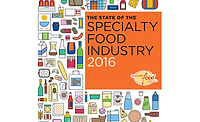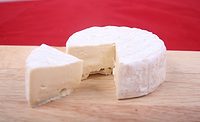Despite tepid growth for most of the food industry, sales of specialty foods in the US topped $100 billion for the first time in 2014, with retail and foodservice sales reaching a record $109 billion, according to a new report from the Specialty Foods Association.
Retail sales of specialty food products skyrocketed nearly 22 percent from 2012 to 2014, with 51 out of 58 specialty food segments showing growth, and many achieving double digit growth. Putting this into perspective, the rest of the food industry grew just 2 percent over the same period.
“The time is now for specialty food,” says Ron Tanner, vice president of philanthropy, government and industry relations for the Specialty Food Association. “Consumers are looking for new tastes, foods with fewer and cleaner ingredients, and health attributes, and products made by companies with values they care about. All of these define specialty foods.”
The report, “The State of the Specialty Food Industry 2015,” tracks US sales of specialty foods through supermarkets, natural food stores, specialty food retailers and foodservice venues over the course of the past three years.
According to the research, the new, larger, resized specialty food market is being fueled by small businesses, with 15 food segments exceeding $1 billion in sales. The industry is stimulated by current trending cuisines like Mediterranean, Indian and Thai, as well as emerging buzzword foods like pickled, fermented, grass fed, sustainable and smoked flavors.
In addition, the top 10 best-selling categories have shifted since 2013. Cheese remained the top specialty product with $3.7 billion in sales, but coffee and cocoa ($3.5 billion) jumped over frozen and refrigerated meat, poultry and seafood ($3.2 billion) to claim second place. Bread and baked goods entered the top five, bumping out yogurt. Nuts, seeds, dried fruits and vegetables rounded out the top 10, with $1.3 billion in sales in 2014.
In 2014, manufacturers had a strong year, with 48 percent reporting growth of 20 percent or more. More than half say they own their own facility, and of these, 45 percent are co-packing products for others. However, the report says in 2015, 64 percent of manufacturers are co-packing private labels for retailers. Overall, manufacturers say the biggest threats to their businesses are deep discounts by competitors, capital and cash-flow management, GMO verification requirements and the high cost of distributor networks.
According to the report, the fastest-growing categories in unit sales are refrigerated pasta and pizza sauces, up 78 percent since 2012, followed by refrigerated pasta and eggs, both up 53 percent. Other noteworthy categories are functional beverages, nut and seed butters, and energy bars and gels.
Retail sales of specialty foods hit a record $85.5 billion in 2014, representing 78 percent of total US sales of specialty foods. Foodservice sales account for the other 22 percent of all specialty food dollars, reaching $24 billion in 2014.
Retailers interviewed for the report said “local” is the most important product claim today and predict it will remain for the next three years. Some 66 percent of those surveyed sell products with non-GMO claims, which manufacturers project as being the top natural and ethical claim for the next three years as “local” is today.
Read more and access the full report here.




